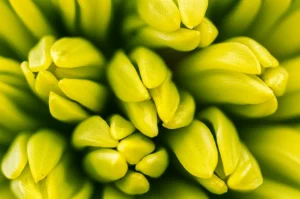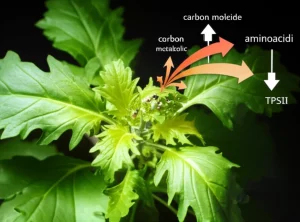Unlocking Plant Potential: How a Root Gene Becomes a Regeneration Rockstar
Hey there, fellow plant enthusiasts and curious minds! Have you ever looked at a plant and just marveled at its ability to bounce back? Snip off a piece, stick it in water or soil, and boom – a whole new plant! It’s this incredible superpower called developmental plasticity, and frankly, it’s mind-blowing. Plants can regenerate tissues and organs like it’s no big deal, helping them survive all sorts of environmental curveballs.
This isn’t just a cool party trick; it’s the foundation of modern plant biotechnology. Think about cloning your favorite rose bush or genetically modifying crops for better yields. A lot of that relies on getting a few plant cells in a dish to basically hit the reset button and start building a whole new plant from scratch. Two big ways they do this in the lab are through something called somatic embryogenesis (SE) and de novo shoot organogenesis.
SE is particularly fascinating. It’s like taking a regular plant cell – maybe from a leaf or a root – and convincing it to act like a zygote, the very first cell of an embryo. This process involves a massive cellular makeover, a total reprogramming of the cell’s identity. Scientists are super keen to figure out exactly how this happens at the molecular level because understanding plant totipotency (a cell’s ability to become *any* cell type, even a whole organism) is kind of the holy grail.
Meet WOX5: More Than Just a Root Guy
Now, enter our main character: WOX5. This is a gene, or more accurately, the protein made by this gene. WOX5 belongs to a family of proteins called WUSCHEL-RELATED HOMEOBOX (WOX) transcription factors. Think of transcription factors as the conductors of a cellular orchestra; they tell other genes when to play (or not play). We already knew WOX5 was a big deal in plant roots, specifically in maintaining the stem cells in the root tip (the Root Apical Meristem, or RAM). It hangs out in a special spot called the quiescent center (QC) and helps keep the stem cells there happy and ready to divide, but also prevents them from differentiating too quickly.
But guess what? Our recent dive into the world of plant regeneration revealed that WOX5 isn’t just a root specialist. Turns out, it’s also heavily involved in that magical process of somatic embryogenesis when we culture plant cells in a dish! We found that WOX5 plays a crucial role in kicking off SE in *Arabidopsis*, a common model plant scientists use.
This discovery is pretty exciting because it shows a genetic parallel between maintaining stem cells in a plant’s natural root tip and inducing that same kind of “stem-cell-like” potential in a regular somatic cell in the lab. It highlights how plants reuse these fundamental genetic tools for different developmental jobs.

The Auxin Connection: WOX5’s Partner in Crime
So, how does WOX5 pull off this reprogramming trick? Our findings strongly suggest it does it by messing with genes involved in auxin pathways. Auxin is a super important plant hormone – basically, a chemical messenger that tells cells what to do. It’s involved in everything from root growth to fruit development, and we already knew it was critical for inducing SE in the lab.
WOX5 seems to be controlling genes related to all aspects of auxin’s life cycle in the cell:
- Biosynthesis: How the plant makes auxin (genes like TAA1, YUC1).
- Transport: How auxin moves around the plant or within tissues (genes like PIN1).
- Distribution: Where auxin ends up, creating important concentration gradients.
- Signaling: How cells receive and interpret the auxin message (genes like ARF5).
Think of WOX5 as a conductor not just for the stem cell orchestra, but also for the auxin band within that orchestra during SE induction. It’s telling the auxin players when and how loud to play, which in turn helps reprogram the somatic cells.
Experiments That Spilled the Beans
How did we figure this out? We used some clever genetic tools in *Arabidopsis*. We worked with lines where we could either crank up WOX5 activity (overexpression) or where WOX5 function was messed up (a mutant line). Then we cultured bits of these plants (immature zygotic embryos) in dishes with or without auxin.
Here’s what was really telling:
- When we *overexpressed* WOX5, the plant bits could undergo SE even *without* adding extra auxin to the dish. It was like WOX5 was doing the auxin’s job for SE induction.
- Conversely, in the *wox5 mutant* line, SE induction was severely reduced, even when we *did* add auxin. This strongly suggested WOX5 is essential for the auxin-induced SE response.
- We also saw that WOX5 expression itself went way up when we cultured normal plant bits on auxin-containing medium that induces SE, but stayed low on medium that just lets them grow into seedlings. This correlation further linked WOX5 to the embryogenic pathway.
We even watched where WOX5 was active in the plant bits using a fluorescent marker (GFP). Normally, GFP signal was only in the root tip. But when we put the plant bits on SE-inducing medium, the GFP signal popped up in other parts, like the cotyledons (the first leaves), which are known to be involved in SE. This spatial change in WOX5 activity further supported its role in SE.

Digging Deeper into the Auxin Network
To confirm WOX5’s influence on auxin, we looked at how it affected an auxin “reporter” line (DR5-GFP). This line lights up with GFP wherever auxin is active. When we overexpressed WOX5, we saw increased GFP signals, especially in the parts of the plant bit that were undergoing SE. This was true even without external auxin, reinforcing the idea that WOX5 boosts auxin activity or perception.
Then, we got specific. We checked the expression levels of genes known to be involved in auxin. We found that WOX5 overexpression led to higher levels of:
- TAA1 and YUC1: Genes involved in making auxin.
- PIN1: A gene that helps transport auxin.
This directly showed that WOX5 is influencing the machinery that produces and moves auxin around, likely creating the right conditions (maybe local auxin hotspots) needed for somatic cells to become embryos.
We also played with a chemical called NPA, which blocks auxin transport. Interestingly, NPA alone could induce some SE even without extra auxin, probably by causing auxin to build up in certain spots. But when we combined NPA with WOX5 overexpression, the SE response was even better! This suggested WOX5 is working *with* the auxin transport system, possibly by influencing how PIN proteins are located or function, similar to its role in the root tip.

Connecting the Dots: WOX5 and Other Key Players
The SE process is controlled by a whole network of transcription factors. We looked at the relationship between WOX5 and some other known players in this network, particularly those linked to auxin and stem cells: ARF5, LEC2, and PLT3.
Turns out, WOX5 overexpression boosted the expression of ARF5, LEC2, and PLT3. This is super interesting because:
- ARF5 is a major player in auxin signaling.
- LEC2 is known to activate auxin biosynthesis (via TAA1/YUC1) and is a core regulator of embryo identity.
- PLT3 is involved in stem cell maintenance and development, often working with WOX5 in roots.
It seems WOX5 might be acting upstream of these important regulators, pulling their strings to orchestrate the embryogenic transition. For example, by activating LEC2, WOX5 could indirectly ramp up auxin production. By influencing PLT3 and ARF5, it could affect auxin transport and signaling, creating the necessary auxin environment.
We even showed that overexpressing PLT3 on its own could promote SE without extra auxin, much like WOX5 overexpression. This supports the idea that WOX5 and PLT3 are working together in this process.
Keeping Differentiation at Bay
Reprogramming a cell isn’t just about turning on the right genes; it’s also about turning *off* the genes that tell it to be something else. In the root tip, WOX5 is known to repress a gene called CDF4, which promotes differentiation (cells becoming specialized). We wondered if WOX5 did something similar during SE.
And yep, it does! When we overexpressed WOX5, the levels of CDF4 transcripts went down significantly. This was especially true when auxin was present, suggesting WOX5 works with auxin to suppress this differentiation factor. This is crucial because to become an embryo, the somatic cell needs to *stop* being a leaf cell or a root cell and maintain a flexible, undifferentiated state.
We also saw that CDF4 expression popped up later in the SE process, likely when the developing embryo structures start to differentiate into specific tissues. And, if we *overexpressed* CDF4, it actually *inhibited* SE. This confirms CDF4’s role as a differentiation promoter that needs to be kept in check for SE to happen, and WOX5 seems to be the one doing the checking.

The Big Picture: WOX5 as a Master Switch?
So, what’s the takeaway from all this? Our study paints a picture of WOX5 as a key regulator, a kind of master switch, in the complex process of somatic embryogenesis. It doesn’t just have its job in the root; it can be recruited to help reprogram somatic cells in the lab.
The striking similarity between how WOX5 functions in maintaining root stem cells and how it promotes SE induction is really cool. In both cases, it seems to be integrating signals (especially auxin) and controlling a network of transcription factors to maintain a state of pluripotency (the ability to develop into multiple cell types) and prevent premature differentiation.
We think WOX5 acts by fine-tuning auxin levels and distribution, possibly by boosting auxin biosynthesis (via TAA1/YUC1, potentially regulated by LEC2) and influencing its transport (via PIN1, potentially regulated by PLT3 and ARF5). At the same time, it puts the brakes on differentiation by repressing genes like CDF4.
This new understanding of WOX5’s role opens up exciting possibilities for biotechnology. Some plant species are notoriously difficult to regenerate from tissue culture – they are “recalcitrant.” Identifying key regulators like WOX5 gives us new targets to manipulate. Could we use WOX5 to make it easier to regenerate important crops? The first steps are already being taken in wheat! WOX5 might just be the key to unlocking the regeneration potential of many more plants.
It’s a complex dance of genes and hormones, but figuring out the steps, one protein like WOX5 at a time, gets us closer to harnessing the incredible regenerative power of plants.
Source: Springer







